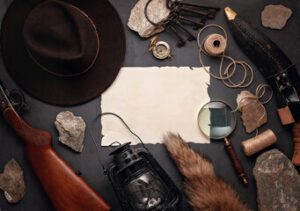Many solar panels look similar to each other and it can be difficult to differentiate between high-quality and low-quality products. Luckily, there are a few important factors you should keep in mind.

If you are considering going solar, it is worth considering the long-term costs and energy savings to see whether the upfront investment makes sense for your household. Contact Solar Companies Salt Lake City for professional help.
The concept behind solar energy is as old as human civilization. The first rudimentary solar panel was created as early as 1839 by a 19-year-old Frenchman named Edmond Becquerel, who discovered the photovoltaic effect – the process of directly converting sunlight into electricity. He used selenium coated with gold, which produced a small amount of electrical current.
Over the next few decades, several other scientists made advances in the field of solar energy. In 1916, chemist Jan Czochralski invented single-metal crystals, which are used in modern solar cells. In 1954, engineers at Bell Laboratories developed the first silicon solar cell that could produce a significant amount of electricity. This initial cell only generated four percent efficiency, but it was still an important step forward in solar technology.
In 1973, oil shortages in the States brought renewed interest to the idea of generating energy from sunlight. Concerns about oil spills, polluting power plants and the extinction of wildlife led to the creation of Earth Day on April 22 of that year, which ushered in the modern environmental movement. The movement encouraged the development of solar energy and gave rise to solar incentives in the form of tax credits.
Solar panels are made of semiconductor materials installed in a metal panel frame with glass casing. When exposed to sunlight, the semiconductors absorb photons of light – very small packets of energy – and release electrons, which creates an electric current. Solar panels are used for a variety of purposes in both homes and businesses. They are a renewable, clean energy source that reduces greenhouse gas emissions and lowers electricity bills.
When a solar panel is no longer needed, it can be recycled. The aluminum frames and junction boxes are dismantled manually at the beginning of the recycling process. The silicon-based modules are then crushed in a mill to separate different fractions. It is possible to recover more than 80% of the original weight of a PV module. The resulting material is marketed as recycled silicon or PVsu, and it is often utilized in building and automotive applications, as well as flat glass insulation.
Solar Cells
The solar panel is the foundation of a solar energy system. A single cell can produce up to 2 watts of electricity, enough power for small electronic devices such as wristwatches and calculators. Solar panels are assembled into modules that produce greater amounts of power. Each module contains a series of cells connected by thin strips, usually made of tin-coated copper or palladium-coated copper, which act as the transmission channel for current flow.
Solar cell efficiency depends on the temperature and the material used. It also depends on how well the photovoltaic cells are positioned, aligned, and shaded. The optimum solar panel efficiency is reached at about 10-20%.
Crystalline silicon (c-Si) cells are sliced from ingots that take up to a month to grow. They are used for monocrystalline solar panels and cells (mono c-Si) as well as polycrystalline solar panels and cells (poly c-Si). Thin-film solar cells are around 100 times thinner. They can be produced from a variety of materials including cadmium-telluride, copper indium diselenide, and organic PV materials.
A solar panel’s performance is directly proportional to its surface area, so it is important to size the system correctly. For example, a rooftop system should be sized so that it will generate sufficient energy to offset its own cost over time.
While the cost of solar panels has dropped dramatically over the past 30 years, it is still important to factor in local, state, and federal incentives into any purchase decision. These rebates, tax credits, and grants can help reduce the upfront cost of a solar system, helping to speed up the payback period.
The solar panel assembly is completed by adding a protective back sheet and an insulation layer to prevent heat loss and humidity. The back sheet is often made of glass or polyethylene, while the insulation helps to prevent the solar cell from overheating and lowering its efficiency. An antireflective coating is also added to enhance sunlight absorption. Electrical contacts are then added to connect the solar cell to other solar cells or to a battery. The contact pads can be made of tin-coated copper, nickel or silver.
Solar Panels in Cold Weather
As any solar panel owner knows, sunlight is key to generating renewable energy. But, despite a common misconception, solar panels don’t only work in warm weather. In fact, a number of factors make solar power even more effective in colder temperatures.
On a molecular level, the electrons in your solar panels are at rest (low energy) when it’s colder. When the electrons are activated by the sun’s rays (high energy), they create more electricity than they would on a warm day. The result is that solar panels produce more electricity in the winter than they do on a sunny summer day.
In addition, the sun sits lower in the sky during the winter. This can make the difference in whether your system produces a significant amount of electricity. Depending on the structure of your home, adjusting the tilt of your solar panels to allow them to face the sun more directly can help boost electricity generation.
Another factor that can decrease solar production is snow and ice accumulation. As anyone who’s experienced a cold-weather blizzard knows, if snow builds up on solar panels, it can hamper electricity output.
Fortunately, there are ways to prevent this from happening. Solar panels are typically designed with a tilt to facilitate the natural shedding of snow, preventing excessive buildup that can hinder sunlight exposure. And, since the dark surface of the panels reflects light, any snow that does accumulate tends to melt and fall off more quickly than it might otherwise.
Solar panel maintenance in the winter is essential, however. Keeping your solar panels clear of snow, debris and ice is essential for keeping them working at their best.
With regular snow removal, your solar panels can continue to deliver a steady flow of clean energy all through the winter. But, before you run outside and begin shoveling, consider the following tips to help you maintain your solar panels in colder conditions.
Solar Panels in Warm Weather
As the world heats up with blazing summer temperatures and record-breaking weather patterns, solar energy seems like an obvious solution. After all, areas that receive more sunshine and have warmer climates are often some of the best locations for solar panels. However, while hotter climates may seem ideal for solar panels, the truth is that too much heat negatively impacts solar energy production.
The reason is that solar panels produce electricity by moving electrons around the panel’s semiconductor material. The more electrons that move, the more electric current (solar power) is produced. On a cool day, it takes more energy to dislodge the electrons and create electricity than on a warm day. As the temperature rises, the panel must work harder to produce electricity. This explains why a sunny, clear winter day is actually better for producing solar energy than a hot, overcast summer day.
In terms of the specifics, solar panel performance drops off for every degree above the optimal operating temperature, which is 77 degrees Fahrenheit according to industry standards. This decrease in efficiency is a result of the semiconductor properties in the panel deteriorating with each increasing temperature. While the exact impact of this drop can vary by brand, it is important to keep in mind when considering solar energy for a hot climate.
Solar panel brands typically provide information about their optimal temperature range in their specifications. This can help homeowners make an educated decision about which solar panels are best for their home if they have a particularly hot climate or experience intense summer sun. In addition to the optimal temperature range, most solar panel manufacturers also provide a “temperature coefficient,” which is a rating that indicates how efficiently the panels perform in various temperatures.
As the technology improves and more manufacturers compete to build the most efficient solar cells, the temperature coefficient ratings are becoming more and more useful for consumers. In general, the older style crystalline silicon panels perform better in high temperatures than their newer counterparts. Your local solar salesperson will be able to explain the different ratings and how they affect your home’s solar energy production.

